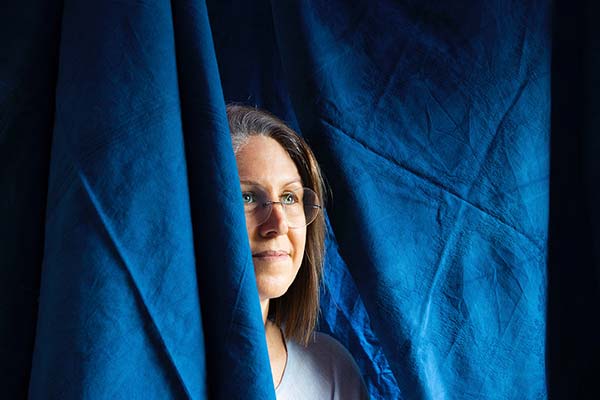Inside the Studio with Rachael Wellisch
Inside the Studio offers a behind-the-scenes peek into the work environments of WTP artists, as well as insight into their creative process within these resonate spaces. See Rachael Wellisch’s work in WTP Vol. IX #5.
By Jennifer Nelson, WTP Feature Writer
At her home in Brisbane, Australia, Rachael Wellisch converted a small garage into a studio. On the floor, the Australian fiber artist works, while at a desk stacked with books and papers, she writes and does research. The open area space has enough room to store books, textiles, and other art materials, as well as camping gear and a few tools. Her twelve-year-old daughter, Indigo, regularly raids her mother’s stationery and art supplies, while her dog Charli curls up between piles of fabric. Needless to say, the car is not parked in the garage.
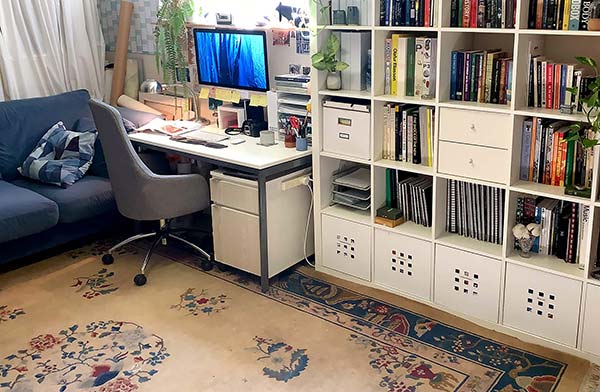
For some projects, Wellisch uses other areas. She sews on the kitchen table, dyes fabric in the garden, and lays out cloth on the dining table. Her family sometimes eats meals around a coffee table when fabric overtakes the dining table. Her daughter has gotten glimpses into the art world, going twice with her mother to the Venice Biennale, one of the oldest and most prestigious art events.
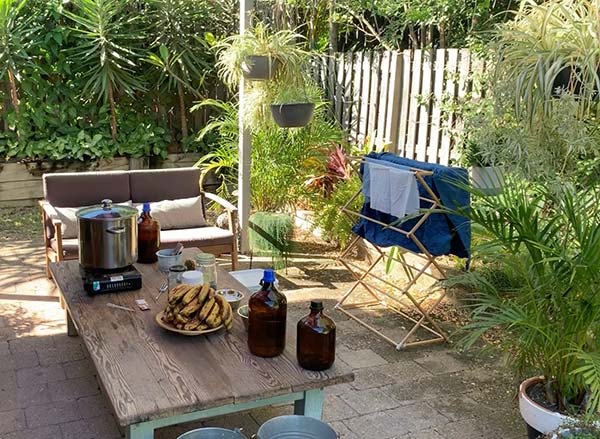
“There are almost always loose blue threads about the place, but it’s nice that my daughter gets to experience a wide variety of art processes and join in too,” says Wellisch.
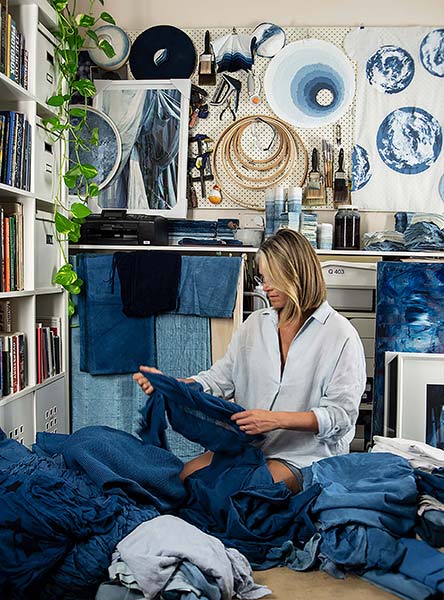
Wellisch admits that she could use more space. Materials, which are often salvaged household textiles, such as discarded bedsheets, clothes, tablecloths, and curtains, are stored above, below, inside, and outside her house. “My studio floor is almost always shifting piles of textiles in various stages of being worked on.”
Currently, Wellisch has access to equipment and space at Griffith University where she’s been a doctoral candidate. This, however, will end soon. “I am looking around now at what’s available in terms of hiring equipment and space for larger productions, and how to mitigate the expenses,” she said. “Something I am daydreaming about is a large garden plot, so I can grow more dye plants!”
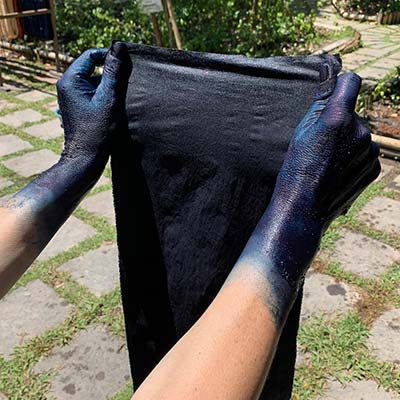
Wellisch’s workday begins with coffee—usually in the garden after Indigo’s school drop off. When she has deadlines, she’ll rise as early as 4 a.m., taking advantage of the quiet. In her studio, she makes out of textiles hand-made paper, sculptures, wall hangings, photography, and installations. She also takes time to meet up with artist friends for talks about art and visits to galleries.
Often, Wellisch has many works in progress. She admits she has a short attention span, which translates into her moving on to another task when she’s had enough of one. “My processes are all quite slow and labor intensive, so with multiple pieces I can keep working, while I wait for something to dry, for example,” she said. “This slowness allows time to connect with materials and is when ideas for new work will often emerge.”
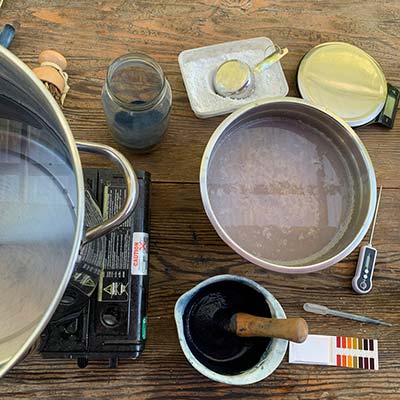
For Wellisch, working towards an exhibition creates a useful deadline. Applications often need to be done twelve to twenty-four months in advance. “Applying for exhibitions and art prizes requires constant documentation of artworks, so I do most of this myself, either inside or in the backyard, depending on the light, using a thrift shop roller blind.”
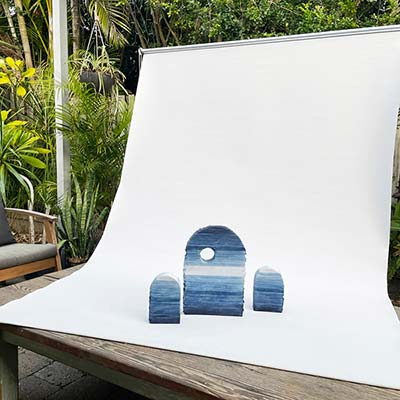
Residencies have been a great way for Wellisch to focus on a specific project or start exploring in a new environment. At a four-week residency in her hometown, she appreciated how she didn’t have to tidy up her workspace at the end of the day. “I could just walk out and come back the next day where I’d left off,” she said. “And it was a paid residency which was helpful in contributing to production costs!”
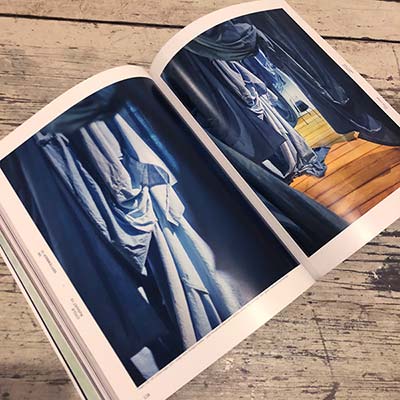
Click here to read more Inside the Studio features.
Copyright 2021 Woven Tale Press LLC. All Rights Reserved

